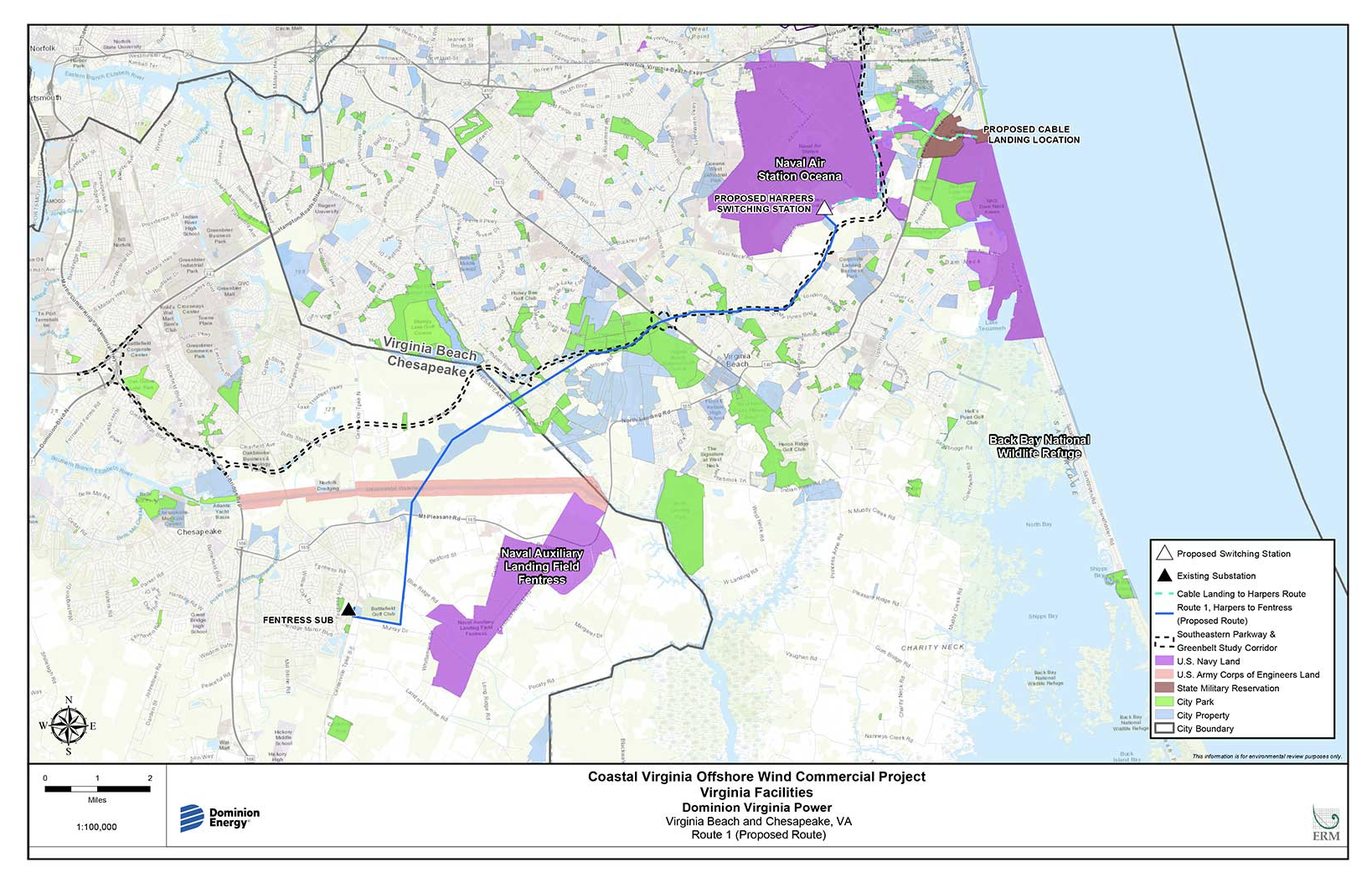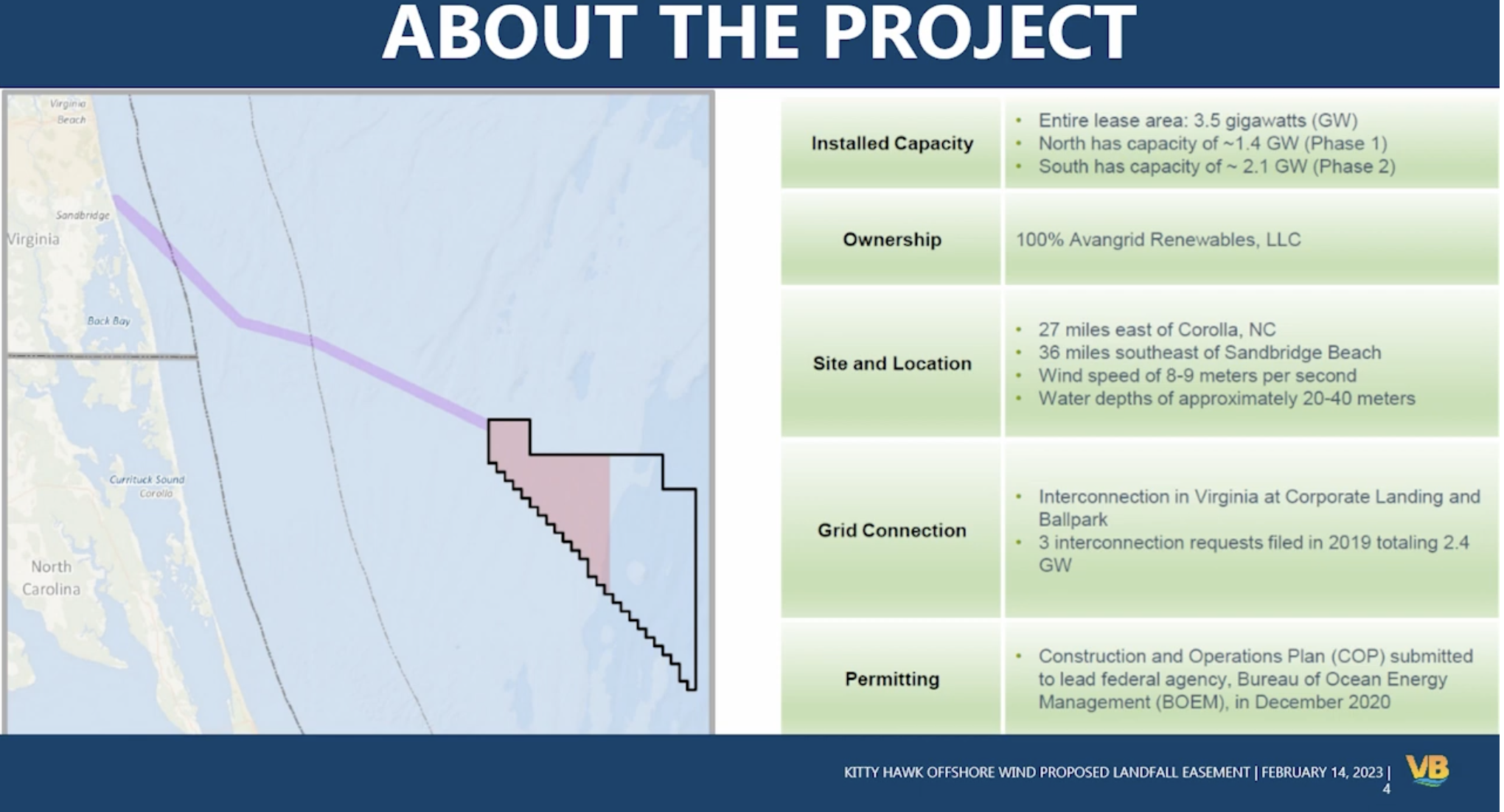by James C. Sherlock
There is a dominant engineering problem in bringing offshore wind-generated electricity ashore in Virginia Beach. Flooding and water tables very close to the surface are the twin reasons there are few basements in Virginia Beach. And those that have them regret it.
The 2020 Virginia Beach FEMA Flood Hazard Map is 56MB. It is too big to display here. So don’t try downloading it on a phone. But take a look. It is important to the discussion.
Camp Pendleton and Sandbridge are Virginia Beach shore landing spots proposed for offshore wind electricity generated by two different fields. Both will have similar infrastructure pictured below.

Below is the SCC-approved transmission line route from Camp Pendleton for the Coastal Virginia Offshore Wind (CVOW) project. The map does not show flood hazard zones.
I am not sure any public version of it ever did.

I have not yet seen the onshore routing proposed for the as-yet-not-approved Kitty Hawk Offshore Wind (KHOW) project from Sandbridge to its three proposed grid interconnection points inland.
The KHOW Project landing site is proposed at Sandbridge because the contractor’s assessment is that the grid infrastructure in North Carolina won’t be able to handle it.
We hope Virginia’s will.
Coastal storm surge raises potential problems at both landing sites, but especially Sandbridge, which will be overwashed in the FEMA projections.
Between Sandbridge, a barrier island, and the mainland is a swamp. The (up to six) cables are to be underground the entire way to the switching station or stations inland.
I have no doubt that the engineering by Avangrid Inc., the contractor, took this into account. But Virginia Beach Public Works, with a huge dog in the fight, has reportedly only recently seen the proposal.
The obvious questions include:
- what will the final product — transmission lines/towers, switching stations, onshore substations — look like in Virginia Beach beyond the landing sites;
- the proposed manhole access to the cables at the city’s parking lot at the beach raises storm surge over-wash issues;
- the corrosive effects of the very high and brackish water tables along the routes at which the onshore export cables are underground;
- any flooding mitigation required;
- the impact on the Virginia electric grid;
- Where and how any utility-scale storage batteries will be located when the technology is available; and
- any accommodations that may necessary with existing city utility infrastructure.
The Virginia Beach City Council postponed a vote on the Sandbridge project.
The Council representative from Sandbridge, Barbara Henley, did not appear amused by the presentation by the City Manager, especially because Virginia Beach Public Works reportedly had not had time to study it.
Our city’s Public Works has impressed me with their engineering work in the past. It will be interesting to hear their take on the project.
Perhaps the Council will ask that the KHOW project proposal be displayed on the FEMA flood map the next time it is discussed.
If so, I expect those above are some of the questions they will be asking.
KHOW, if approved, may well work as pictured or be rerouted. But there are a lot more questions to be asked and assessments yet to be done.
Using the flood maps.


Leave a Reply
You must be logged in to post a comment.